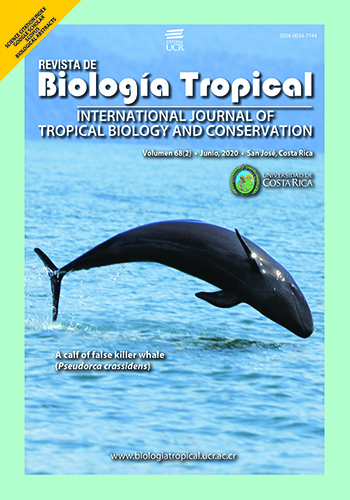Abstract
Introduction: Describing biodiversity patterns and the underlying drivers is relevant for tackling the rampant pressures on tropical freshwaters. This is particularly relevant in scarcely studied regions, such as in the Colombian Guiana shield. Objective: To describe the taxonomic and functional structure of macroinvertebrate communities and assess their variability across spatial and temporal scales. Methods: We sampled the invertebrate communities in four streams during the dry seasons of 2017 and 2018. Additionally, we assessed diversity patterns within and among streams and between different sampling months in one stream. To assess diversity patterns, we compared alpha (differences in taxon richness and abundance within communities) and beta (differences in taxon composition among communities) diversity patterns among and within rivers. Alpha diversity was estimated using the numbers of Hill, while beta diversity was estimated using the Sorensen and Morisita-Horn indices and compared using a similarities analysis (ANOSIM). Results: The taxon composition of the communities was different within (mesohabitat scale) and among streams (regional scale). However, the composition of FFGs changed among but not within streams. The comparison of the numbers of Hill and the taxon composition suggested that the mesohabitat type is a determining factor of the taxonomic but not FFG diversity across scales. At the temporal scale, alpha diversity was low for months with high precipitation (February-April) and high for the dry season (January). The temporal beta diversity was high among sampling periods, being nestedness processes driving beta diversity among years and turnover processes driving beta diversity within years. Conclusion: Streams from Serranía de la Lindosa host a high diversity of freshwater macroinvertebrates. Seasonality and differences in the in-stream habitat heterogeneity seem to determine the diversity patterns observed at different temporal and spatial scales. A deeper study is needed to understand the functioning of these ecosystems and improve the ability to generate management and conservation strategies.
##plugins.facebook.comentarios##

This work is licensed under a Creative Commons Attribution 4.0 International License.
Copyright (c) 2020 Paula Gabriela Córdoba-Ariza, Katterine Rincón-Palau, Jhon Ch. Donato-R., Juan David González-Trujillo


